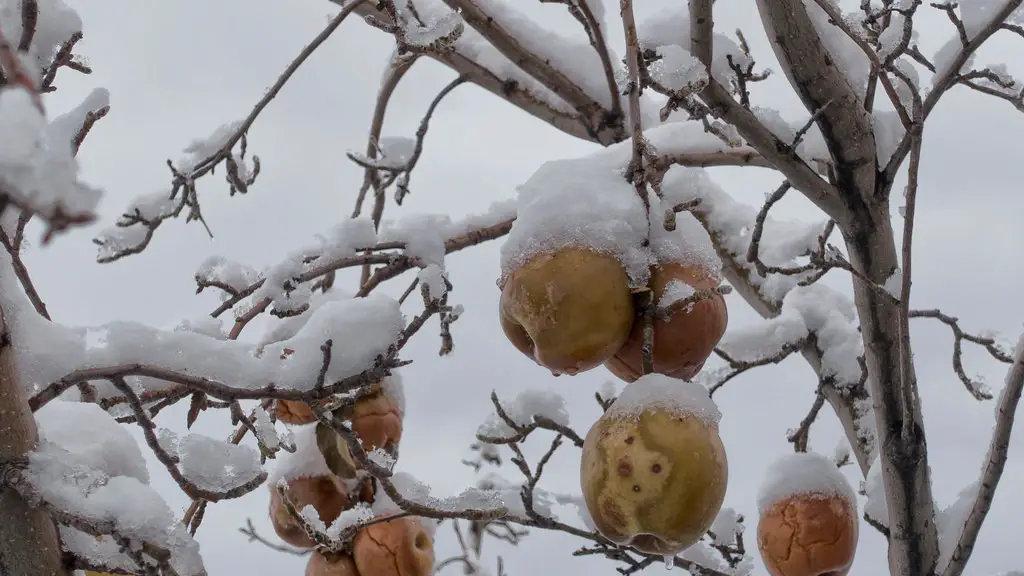Taking lemon tree cuttings is an easy way to propagate citrus plants without the need for expensive or complicated growing media or greenhouses. To carry out the process successfully, it is important to understand the steps involved, select the type of cutting that is most suitable and take good care of the cuttings during the rooting and establishment phases. This guide explains how to do it and should help get you started on your way to successfully propagating your own lemon tree.
Collecting Cutting Material
Start by determining the type of cutting that you’d like to use. Citrus cuttings can be of the stem, root or shoot variety. Stem cuttings should include a few leaves and be taken from relatively young, healthy branches. Be sure to wash your cuttings properly with clean water and let them dry completely prior to planting. It is also important to use sterilized garden tools when taking cuttings in order to prevent the spread of infections and diseases.
Prepping the Cutting
For successful propagation, it is important to properly prepare the cuttings. Removing any additional leaves from the cutting is usually the first step. Once this is done, treat the base of the cutting with a rooting hormone – this helps stimulate root growth. Dusting powder can also be used to guard against infection and disease. Finally, dip the base of the cutting into a rooting gel just before planting.
Planting and Aftercare
Choose an appropriate soil medium for planting the cuttings. Mix some water with the soil or coco peat to create a consistency that will help retain moisture but isn’t too wet. Plant the cuttings at a depth of one to three inches, and take care to firmly pack the soil around the rooting area. Put the pot in a warm and bright area, but out of direct sunlight, and be sure to keep the soil damp.
It may take up to several weeks for the cuttings to root and establish, but if all goes well, soon you will have a healthy lemon tree you can enjoy for many years to come.
Providing Heat and Airflow
It is of utmost importance to provide warmth and proper airflow to the cuttings throughout the rooting and establishment phase. Keeping the cuttings warm helps promote root growth, whereas sufficient air circulation helps prevent fungal infections. To apply the two together, use bottom-heat coupled with a fanning system. This can be achieved with either a propagation mat and fan combination or a more sophisticated misting system.
Providing the Right Amount of Light
It is then important to ensure the cuttings are receiving the correct amount of light. Too much light can cause them to dry out, whereas too little will stunt their growth. It is best to place the cuttings at a spot that receives bright, indirect sunlight. If direct sunlight is unavoidable, then make sure to monitor the cuttings closely and move them to a shaded area if necessary.
Maintaining the Plant’s Nutritional Needs
Citrus plants require certain types of nutrients, especially nitrogen and phosphorous, to thrive. When the cuttings are small and taking root, it is best to not fertilize them until they’ve grown big enough. When they reach a certain size, give them a balanced fertilizer such as one with a ratio of 10-10-10 every couple of months. Avoid fertilizers that are higher in nitrogen; this type of fertilizer encourages plant growth at the expense of root, flower and fruit production.
Watering Frequency and Quantity
Citrus plants are sensitive to over and underwatering. If a cutting is underwater all the time, it may not have enough oxygen reaching the roots, which can lead to root rot. If a cutting is allowed to dry up, it will become weak and susceptible to some kinds of root diseases. Water the cutting sufficiently by regularly moistening the soil, but don’t soak it, as too much water can also be detrimental. It helps to let the top two inches or so of the soil dry out before watering it again.
Providing Protection from Insects and Pests
It is important to keep the cuttings safe from pests and insects which may be harmful to the lemon tree. Before planting the cutting, spray it with an insecticidal soap as a preventive measure against different types of insects such as aphids, mites, and mealybugs. After planting, inspect the leaves, stems and branches periodically, and spray the cutting if necessary.
Providing Protection from Disease
Citrus plants can be prone to diseases such as the citrus canker. Be sure to inspect your cutting regularly, especially the leaves, stems and branches, and spray it with a fungicide if necessary. In addition to this, it is a good idea to prune away any dead or diseased parts of the plant, and also to rake away leaves or debris that may have accumulated on the ground as this can provide an ideal breeding ground for pests and fungi.
Transplantation
When the cuttings have rooted and become robust enough to survive on their own, it is safe to transplant the lemon tree into the ground and grow it outdoors. This can be done in early spring, when the weather is appropriately warm. Keep in mind that it is still a vulnerable young tree, so it is important to watch over it and provide it with additional nutrients and water if necessary.



